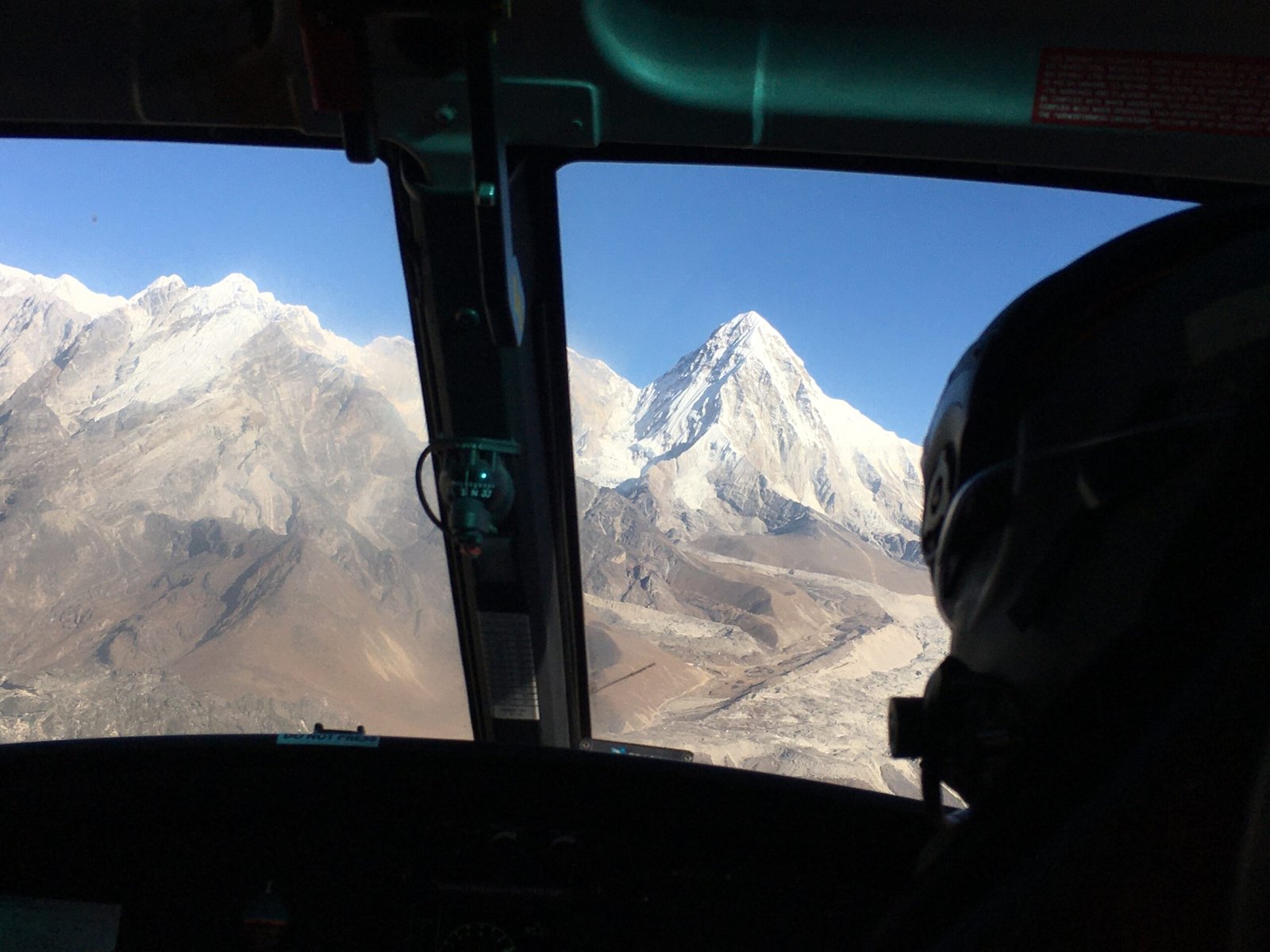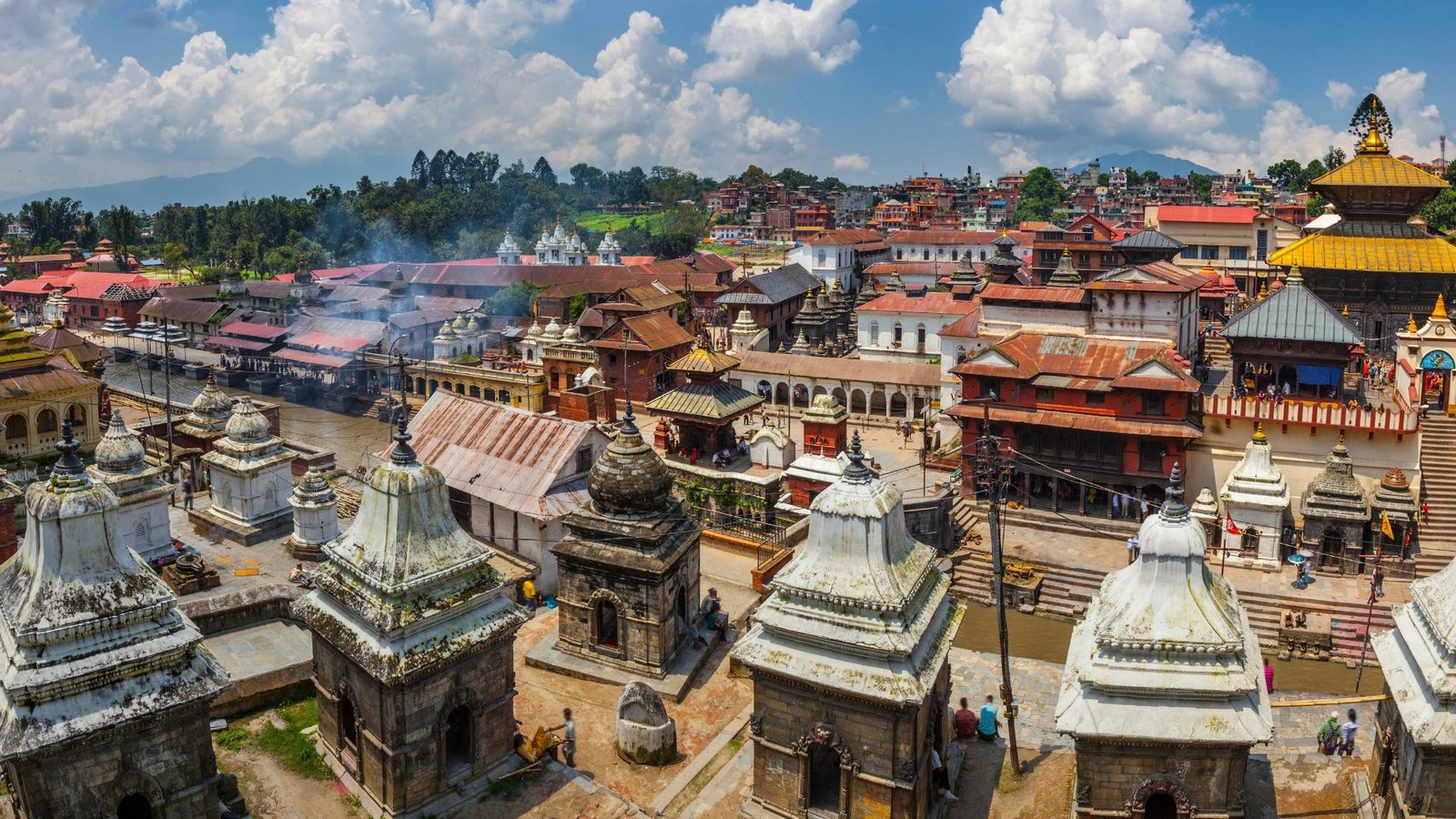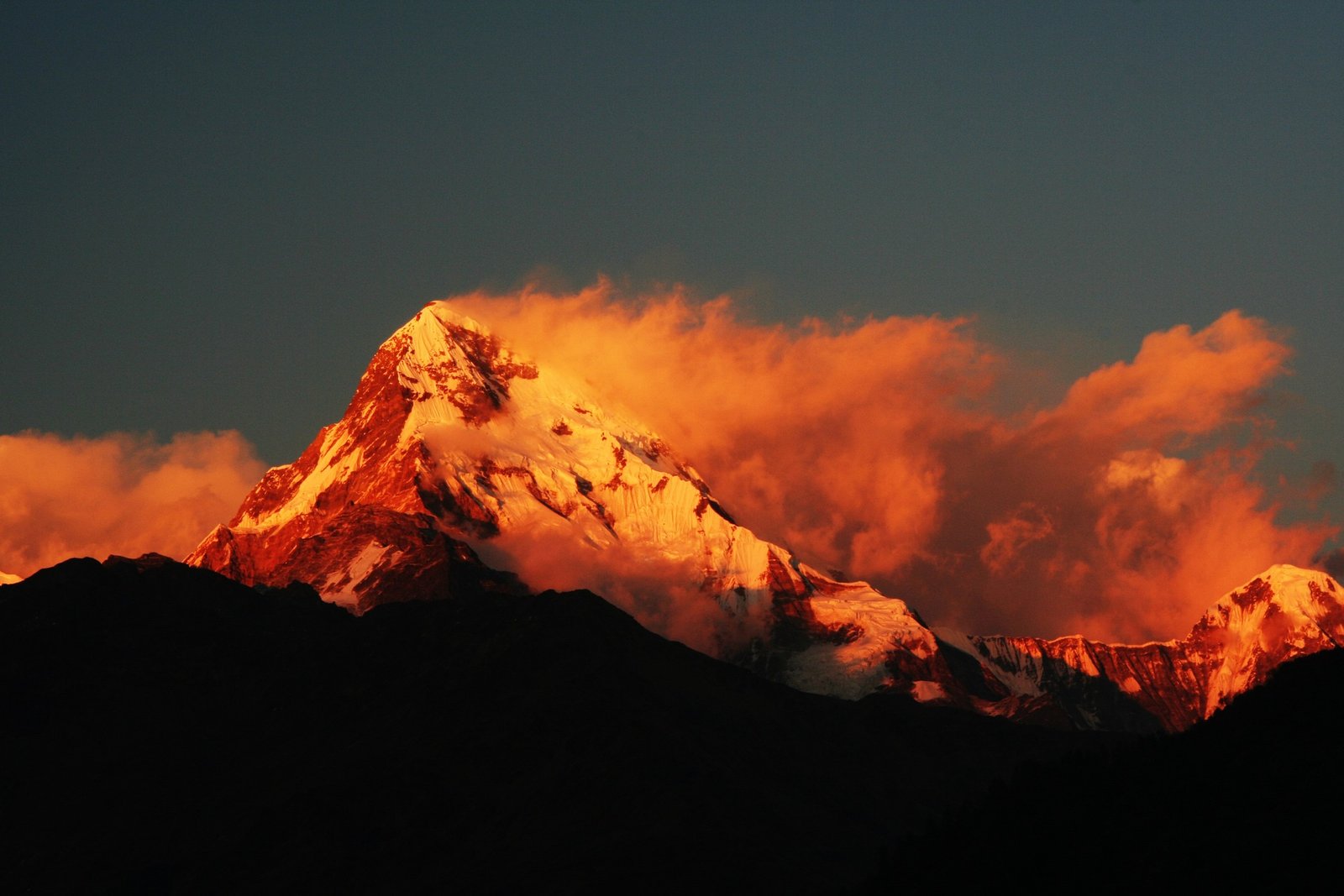Imagine the thrill of soaring above the majestic peaks of the Himalayas, taking in the breathtaking views of Mount Everest from the comfort of a helicopter. It sounds like a dream come true for adventure seekers and adrenaline enthusiasts alike. But can helicopters truly reach the summit of Everest? This tantalizing question draws us into an exploration of the limits of aerial adventure. While the idea of helicopter-assisted ascents tantalizes the imagination, the reality is far more complex. Factors like altitude, weather conditions, and the sheer technical challenges of flying at such heights all come into play. Join us as we delve into the fascinating world of high-altitude aviation, uncovering the capabilities and limitations of helicopters in one of the harshest environments on Earth. From the engineering marvels that enable flight to the daring pilots who face these challenges head-on, we’ll unravel whether reaching Everest’s summit by air is a thrilling possibility or just an ambitious fantasy.
The History of Helicopter Flights Over Everest
The history of helicopter flights over Mount Everest is a testament to human ingenuity and the relentless pursuit of exploration. The journey began in the early 1960s when the first helicopters started making appearances in the Himalayas, primarily for rescue missions and logistical support. These early flights were limited in scope due to the technological constraints of the time. Helicopters then were not equipped to handle the extreme altitudes and harsh weather conditions of the Everest region. Despite these limitations, these initial forays laid the groundwork for future advancements in high-altitude aviation.
The breakthrough came in 2005 when French test pilot Didier Delsalle achieved a historic feat by landing an Airbus AS350 B3 helicopter on the summit of Mount Everest. This remarkable achievement was the result of meticulous planning, extensive testing, and numerous modifications to the helicopter to enable it to operate at such high altitudes. Delsalle’s landing demonstrated that, under certain conditions, it was indeed possible for a helicopter to reach the summit of Everest. This milestone opened up new possibilities for aerial exploration and rescue operations in the region.
Since Delsalle’s historic flight, helicopter operations in the Everest region have continued to evolve. Modern helicopters equipped with advanced avionics, powerful engines, and enhanced safety features have made it possible to conduct a variety of missions, including high-altitude rescues, scientific research, and even sightseeing tours. While the idea of routinely flying helicopters to the summit of Everest remains a complex and risky endeavor, the progress made over the past several decades has significantly expanded the capabilities of aerial operations in the Himalayas.
Helicopter Design and Technology for High-Altitude Flight
The ability of helicopters to operate at extreme altitudes such as those found on Mount Everest hinges on several critical design and technological factors. One of the primary challenges is the significant reduction in air density at high altitudes, which affects both engine performance and rotor efficiency. To address this, high-altitude helicopters are equipped with powerful engines capable of generating sufficient thrust even in thin air. These engines often incorporate advanced materials and cooling systems to maintain optimal performance under harsh conditions.
Rotor design is another key aspect of high-altitude helicopter technology. Standard rotor blades may struggle to generate enough lift in the thin air at high altitudes. Consequently, high-altitude helicopters are equipped with specially designed rotor blades that are longer and more rigid, allowing them to maintain lift and stability even in the rarefied atmosphere of the upper Himalayas. Additionally, these rotor systems are often paired with sophisticated avionics that provide real-time data on rotor performance, enabling pilots to make critical adjustments during flight.
Advanced avionics and navigation systems play a vital role in the successful operation of helicopters at high altitudes. These systems provide pilots with critical information about altitude, airspeed, weather conditions, and terrain, enabling them to make informed decisions in real-time. Modern helicopters also feature enhanced safety systems such as autopilot, terrain avoidance, and collision detection, which are essential for navigating the treacherous landscapes of the Everest region. Together, these technological advancements have significantly improved the reliability and safety of high-altitude helicopter flights.
Challenges of Aerial Navigation in the Himalayas
Navigating a helicopter through the rugged terrain of the Himalayas presents a myriad of challenges that test the limits of both technology and human skill. One of the most significant obstacles is the unpredictable and often extreme weather conditions that are characteristic of the region. Sudden changes in weather, including high winds, heavy snowfall, and rapidly shifting cloud cover, can create hazardous flying conditions that require exceptional piloting skills and quick decision-making.
The complex topography of the Himalayas adds another layer of difficulty to aerial navigation. The region is characterized by steep mountains, deep valleys, and numerous glaciers, all of which can present significant obstacles to flight. Pilots must be adept at maneuvering their helicopters through narrow passes and around towering peaks, often with limited visibility and little margin for error. Advanced navigation systems, including GPS and terrain mapping, are essential tools that help pilots navigate this challenging environment safely.
Another critical challenge is the physiological impact of high-altitude flight on both pilots and passengers. At altitudes above 8,000 meters (26,247 feet), the risk of hypoxia (oxygen deprivation) increases significantly. Helicopter cabins must be pressurized, and supplemental oxygen systems are often required to ensure the safety and well-being of those on board. Pilots must also be trained to recognize and respond to the symptoms of altitude sickness, which can impair cognitive function and reaction times, further complicating the already demanding task of high-altitude navigation.
The Role of Weather Conditions in Helicopter Expeditions
Weather conditions play a pivotal role in the success or failure of helicopter expeditions in the Everest region. The Himalayas are notorious for their rapidly changing weather patterns, which can transform a clear day into a dangerous storm within minutes. For helicopter pilots, understanding and anticipating these weather changes is crucial for planning safe and effective flights. Detailed weather forecasts, real-time updates, and advanced meteorological tools are indispensable resources for pilots operating in this unpredictable environment.
Wind is one of the most challenging weather factors that helicopter pilots must contend with in the Everest region. High winds can create turbulence and reduce the stability of the helicopter, making it difficult to maintain control. Gusty winds can also cause sudden changes in altitude, which can be particularly dangerous when flying close to mountain peaks and ridges. Pilots must be skilled at reading wind patterns and adjusting their flight paths accordingly to avoid these hazards.
Visibility is another critical weather-related challenge. Fog, snow, and low-lying clouds can drastically reduce visibility, making it difficult for pilots to see obstacles and navigate safely. In such conditions, pilots rely heavily on their instruments and navigation systems to guide them. However, even the most advanced technology cannot completely eliminate the risks associated with poor visibility. As a result, helicopter flights in the Everest region are often subject to strict weather-related restrictions, with flights being delayed or canceled when conditions are deemed unsafe.
Notable Helicopter Flights to the Summit of Everest
Didier Delsalle’s historic landing on the summit of Mount Everest in 2005 remains one of the most notable helicopter flights in the region’s history. This remarkable achievement demonstrated that, with the right combination of technology, skill, and favorable conditions, it is indeed possible for a helicopter to reach the highest point on Earth. Delsalle’s flight required meticulous planning and preparation, including extensive testing of the helicopter’s capabilities at high altitudes and careful monitoring of weather conditions to ensure a safe and successful landing.
Another notable helicopter flight occurred in 2010 when a team of Nepalese pilots successfully conducted a high-altitude rescue mission on Everest. The team used a Eurocopter AS350 B3 to rescue climbers stranded above 7,000 meters (22,965 feet) on the mountain. This daring mission required exceptional piloting skills and precise navigation, as the pilots had to maneuver the helicopter in challenging weather conditions and land on steep, icy terrain. The successful rescue demonstrated the critical role that helicopters can play in high-altitude emergency situations.
In recent years, there have been several other notable helicopter flights in the Everest region, including scientific research missions and aerial surveys. These flights have provided valuable data on the mountain’s geology, climate, and ecosystems, contributing to our understanding of this unique environment. While reaching the summit of Everest by helicopter remains a rare and challenging feat, these notable flights have showcased the potential of high-altitude aviation for exploration, research, and rescue operations.
Safety Protocols and Regulations for High-Altitude Helicopter Flights
Safety is paramount in high-altitude helicopter operations, and a comprehensive set of protocols and regulations governs these flights. Pilots operating in the Everest region must undergo specialized training to prepare them for the unique challenges of high-altitude flight. This training includes instruction in advanced piloting techniques, navigation skills, and emergency procedures. Pilots must also be familiar with the physiological effects of high altitudes and be trained to recognize and respond to symptoms of altitude sickness.
Regulatory authorities, such as the Civil Aviation Authority of Nepal (CAAN), enforce strict guidelines for high-altitude helicopter operations. These regulations cover various aspects of flight safety, including aircraft maintenance, pilot qualifications, and operational procedures. Helicopters used for high-altitude flights must undergo regular inspections and maintenance to ensure they are in optimal condition. Additionally, pilots must hold specific certifications and have a certain number of flight hours in high-altitude environments to be eligible to operate in the Everest region.
Emergency preparedness is a critical component of safety protocols for high-altitude helicopter flights. Pilots and crew must be equipped with emergency survival gear, including oxygen supplies, first aid kits, and communication devices. Helicopters must also be equipped with advanced safety systems, such as emergency locator transmitters (ELTs) and satellite communication systems, to ensure that help can be quickly summoned in the event of an emergency. By adhering to these stringent safety protocols and regulations, helicopter operators can minimize the risks associated with high-altitude flight and ensure the safety of their passengers and crew.
Comparing Helicopter Access vs. Traditional Climbing Expeditions
The prospect of using helicopters to reach the summit of Everest presents an intriguing alternative to traditional climbing expeditions. While helicopters offer the potential for quicker and more efficient access to the mountain’s highest reaches, there are several important factors to consider when comparing the two approaches. One of the primary advantages of helicopter access is the ability to bypass the lengthy and arduous trek to base camp and the subsequent climb to higher altitudes. This can significantly reduce the physical demands on climbers and minimize the risks associated with prolonged exposure to high altitudes.
However, helicopter access also has its limitations. The unpredictable weather conditions in the Everest region can lead to frequent delays and cancellations of helicopter flights, making it difficult to rely solely on aerial transportation. Additionally, the technical challenges of flying at extreme altitudes mean that helicopters can only operate under specific conditions, limiting their availability for summit attempts. In contrast, traditional climbing expeditions, while physically demanding, offer a more reliable and time-tested approach to reaching the summit.
Another important consideration is the environmental impact of helicopter operations in the Everest region. Helicopter flights can contribute to noise pollution and carbon emissions, which can have adverse effects on the fragile ecosystem of the Himalayas. Traditional climbing expeditions, while not without their own environmental footprint, generally have a lower impact on the environment. For many climbers, the experience of a traditional ascent, with its physical and mental challenges, remains an integral part of the allure of summiting Everest. Ultimately, the choice between helicopter access and traditional climbing depends on individual preferences, goals, and considerations of safety and environmental impact.
Future Innovations in Helicopter Technology for Extreme Environments
The future of helicopter technology for extreme environments like Mount Everest holds exciting possibilities for enhancing the capabilities and safety of high-altitude flight. One area of ongoing research and development is the improvement of engine performance at high altitudes. Advances in materials science and engineering are paving the way for more powerful and efficient engines that can operate effectively in thin air. These engines may incorporate new cooling systems, fuel injection technologies, and lightweight materials to optimize performance and reliability.
Another promising area of innovation is the development of advanced rotor systems. Researchers are exploring new designs for rotor blades that can generate greater lift and stability in high-altitude conditions. These designs may include features such as variable blade pitch, advanced aerodynamics, and composite materials that enhance strength and durability. Enhanced rotor systems, combined with sophisticated avionics and navigation technologies, have the potential to significantly improve the maneuverability and safety of helicopters in extreme environments.
Autonomous and remotely piloted helicopter technologies are also on the horizon. These innovations could revolutionize high-altitude aviation by enabling helicopters to operate in conditions that are too dangerous or challenging for human pilots. Autonomous helicopters equipped with advanced sensors and artificial intelligence could perform complex tasks such as search and rescue missions, scientific surveys, and cargo transport with greater precision and efficiency. As these technologies continue to evolve, they hold the promise of expanding the frontiers of aerial exploration and adventure in the world’s most extreme environments.
Conclusion: The Future of Aerial Adventures on Everest
The question of whether helicopters can truly reach the summit of Everest is a fascinating one that touches on the limits of human ingenuity, technology, and the spirit of adventure. While the idea of routinely flying helicopters to the summit remains a complex and challenging proposition, the progress made in high-altitude aviation over the past several decades has opened up new possibilities for exploration, research, and rescue operations in the Himalayas. The historic flights and advancements in helicopter technology have demonstrated that, under the right conditions, it is indeed possible to reach the highest points on Earth by air.
As we look to the future, continued innovations in helicopter design, engine performance, rotor systems, and autonomous technologies hold the promise of further expanding the capabilities of high-altitude flight. These advancements have the potential to enhance the safety, efficiency, and environmental sustainability of helicopter operations in extreme environments like Everest. They also offer new opportunities for adventure seekers, researchers, and rescue teams to explore and operate in some of the world’s most challenging and awe-inspiring landscapes.
Ultimately, the allure of Mount Everest, with its towering peaks and breathtaking vistas, will continue to draw adventurers and explorers from around the world. Whether by traditional climbing expeditions or the cutting-edge capabilities of high-altitude helicopters, the quest to reach the summit of Everest embodies the enduring human desire to push the boundaries of what is possible. As technology and human determination converge, the future of aerial adventures on Everest promises to be as thrilling and awe-inspiring as the mountain itself.








